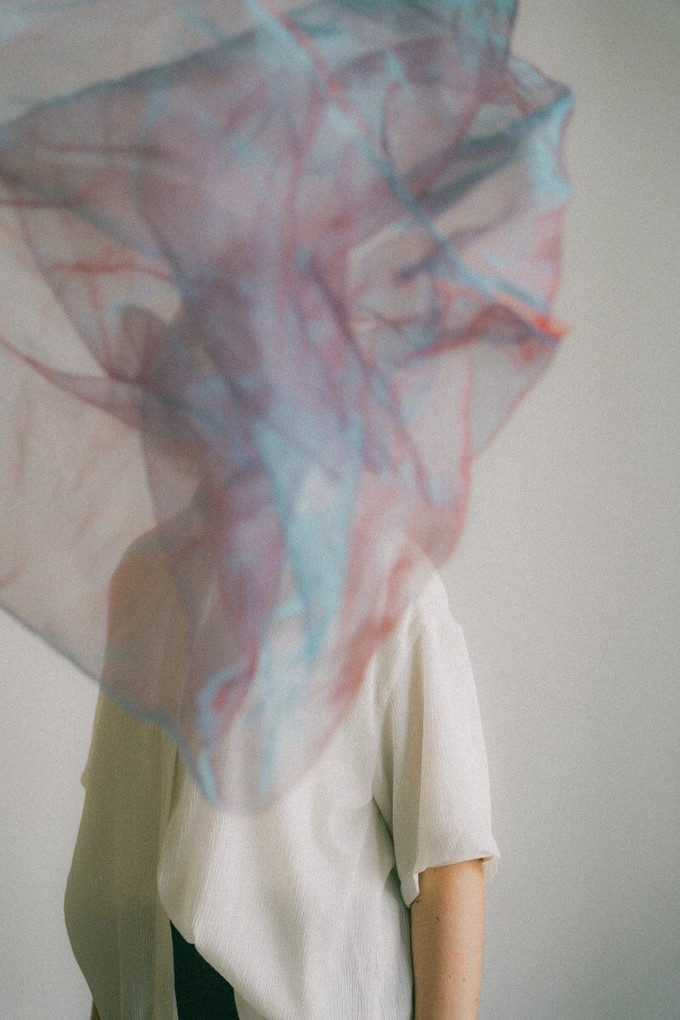- Clothes
- Bags
- Accessories
-
Inspiration
- Shoes
Fabric Frequency: Are Clothes Influencing Your Energy & Mood?

Whenever I want to feel better, cosy, or soothed, I immediately reach out for my alpaca blanket or an organic cotton jumper, not synthetic fabrics. In fact, I once snapped at my sister saying “Can’t you tell I’m already having a bad day? I mean, I’m wearing fleece at work!”
I thought about this when I read a post about the vibrational frequency of clothing.
I didn’t even know it was a thing but, apparently, it’s the reason why what we wear influences our energy and mood.
I was intrigued! Still, I decided to look into it properly.
So, I’ll show you what ‘frequency’ means in practice, what fabrics have the highest and lowest frequencies, and whether or not this makes a difference when you wear them.
Fabrics have frequencies. But what do we mean by ‘frequency’?
Everything in the universe is made of atoms, and these atoms are constantly moving (or vibrating).
So, ‘frequency’ is simply the vibrational energy emitted by materials and matter.
Everything has its own vibrational frequency, from humans to non-living objects… like fabrics.

So, do clothes give off frequency?
Yes, clothes give off frequency (just like everything else in the universe), and different fabrics have different frequencies.
Apparently, their properties and influence on our mood have been observed for millennia. There even seems to be a correlation between fabrics with a high-frequency and the ones recommended by some religions. For example, wool and linen (whose frequencies cancel each other out) shouldn’t be mixed, according to the Old Testament.
However, the more recent claims, discussions, and TikTok videos on this topic come from a fabric frequency study and experiment conducted by Dr. Heidi Yellen in 2003, measured in angstroms (m) using an Ag-Environ machine.
The theory is that the frequency of clothing influences our own—and therefore our mood and energy—either by healing and uplifting us or by causing blocks and draining us.
Is that true, though? Let’s see.
Does the frequency of our clothes affect our mood and energy?
Sorry to spoil the vibe (pun intended) but… even though the frequency of clothes is real, it’s not proven to affect your mood or energy.
While Dr. Yellen’s fabric frequency study is often treated as gospel online, it’s highly criticised and was never validated by the scientific community.
However, I realised there is a connection between high-frequency fabrics and tangible benefits!
But before I reveal it, let’s go through the frequencies of the most common clothing fabrics.
And by the way, I appreciate that, depending on their beliefs and spirituality, some people might feel differently about this.
So, do whatever feels right! It definitely doesn’t hurt to prioritise high-frequency fabrics, anyway. As well as being some of the most sustainable and eco-friendly materials, they have some additional benefits (more on that soon).
Fabric frequency list and overview

So, what clothes have a high vibrational frequency? What about the lowest ones?
Here are the main fabric frequencies.
Fabrics with a high frequency
(said to increase your energy and boost your mood)
Fabrics with a medium frequency
- Hemp fabric frequency: 100-150 MHz
- Organic cotton fabric frequency: 100 MHz
- Cotton fabric frequency: 70 MHz
Fabrics with a low frequency
(said to trap your energy and have a negative impact on your mood)
- Polyester fabric frequency: 15 MHz
- Rayon fabric frequency: 15 MHz
- Nylon fabric frequency: 15 MHz
- Acrylic fabric frequency: 15 MHz
- Bamboo fabric frequency: 15 MHz
- Silk fabric frequency: 10-15 MHz
Different fabric frequencies in a nutshell
While there are exceptions (like silk and bamboo), natural fabrics tend to have higher frequencies. For synthetic ones, they’re much lower.
Why fabrics affect us in different ways

“They do, then?”
Yes, but not because of the frequency of clothing.
While that is still a debated topic, there are plenty of studies on how different fabrics interact with our body—and therefore, our mood.
For example, this concerns:
- The fact that they manage moisture and heat differently. Most natural fabrics help you adapt to warmer temperatures (which feels more comfortable)
- The nervous system responses they trigger (for example, the electrostatic electricity of wool is being studied as a new approach for neuropathic pain relief)
- Whether or not they neutralise odours and bad smells (and various natural fabrics do)
- Their chemical finishes. And since synthetic fabrics are derived from petroleum and require a chemically intensive production process, this often involves toxic or irritating chemicals
Have you spotted the pattern?
Yep. Most of the ones with soothing or beneficial properties are natural materials (which also happen to be high-frequency fabrics). The ones that lack them or that come with additional concerns are synthetic (low-frequency).
Of course, there are other factors to consider, too. For example, traditional cotton is natural, sure. But at the same time, it’s usually loaded with pesticides and bad chemicals.
The moral of the story?
While fabric frequency is real, it’s not currently proven to affect your energy and mood, but some clothes do indeed do that (even though it’s for different reasons that, in many cases, happen to overlap with the former).
Either way… we’re not imagining it when we feel better after wearing specific materials or cosying up under a wool blanket!
Share our story
Related articles
Find Your Fashion Style for Your Star Sign (& Ditch Trends)
When you start dressing based on YOUR zodiac sign, you’ll probably feel more aligned. So, from colours to key pieces & vibes, here’s a simple guide.
Psychology of Fast Fashion: Why You Can(’t) Stop Buying It
Do you feel like you just can’t stop buying new clothes? Here’s why the psychology of fast fashion is keeping you trapped (and how to break free).
How to Create a Signature Style in Fashion [6 Easy Tips]
Whether with a palette, repeated pattern or something else entirely, here’s how to create a signature style for an immediately recognisable fashion statement.
Project Cece is a platform that collects ethical fashion from vetted brands and shops in one place. Browse ethical fashion for women and men and find items that fit your style, budget and values!
_large.png)


![How to Create a Signature Style in Fashion [6 Easy Tips]](/static/_versions/blogs/consistent_garments_and_accessories_creating_a_recognisable_signature_look_in_fashion_medium.jpg)